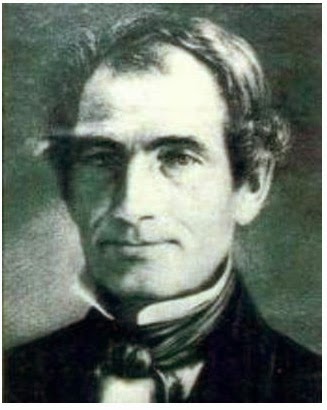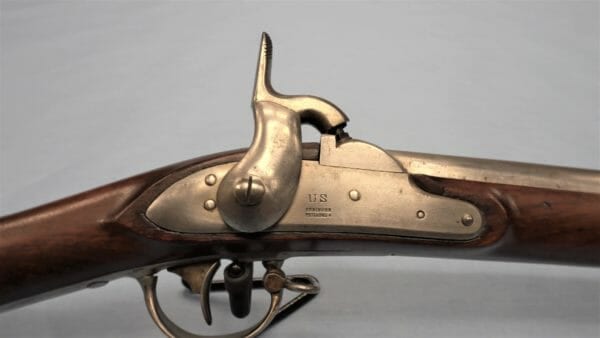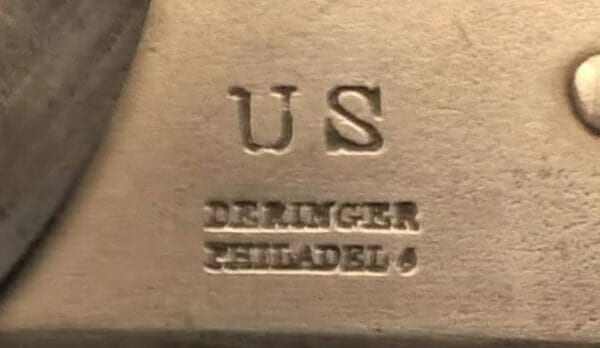U.S.A. –-(AmmoLand.com)- Henry Deringer, Jr. had gunsmithing in his blood: his father, an immigrant from Germany, came to the American Colonies before the Revolutionary War. Henry Deringer, Sr. settled in Pennsylvania, and was known for making the now-iconic Pennsylvania-style long rifles and pistols.

Born in 1786, Junior apprenticed at the Virginia Manufactory in Richmond while in his early twenties. While there, he learned the intricacies of the trade by making arms for the Virginia state militia. Upon completion of his apprenticeship, he moved back to Philadelphia and opened up his own gunsmithy.
By 1814, much of Henry’s time was occupied with filling various government contracts. These contracts were quite lucrative, and it was the desire of most gunmakers in this era – just as it is today – to obtain one. Deringer ended up making more than 20,000 Model 1814 and Model 1817 flintlock long arms. He also made some 50,000 flintlock trade arms, including those for John Jacob Astor’s American Fur Company.
But military contracts were where the real money was, and Deringer, like others, saw an opportunity with the outbreak of the Civil War in 1861.
Deringer traveled to Washington, D.C. with a sample rifle in July 1861 and offered to furnish 500 to 600 rifles to the Ordnance Department. General James Ripley, Chief of Ordnance, wrote to Deringer on July 11, 1861, stating that the rifles could not be purchased unless there were sufficient numbers to arm an entire infantry regiment and the purchase was authorized by the secretary of war.

Surviving correspondence from General Ripley to Deringer on July 28, 1861, directed Deringer to contact the Ordnance Department’s purchasing agent, Captain Silas Crispin, in New York City, who would then determine “if the arms are of a kind and quality which it is desirable to obtain for the U.S. service,” and if the price was appropriate. However, no additional information about any U.S. Government purchase of Deringer’s rifle has surfaced.
So how many were made? That’s a good question with no solid answer.
It could be as little as a few hundred, or as many as 1,000 – but the exact number is unknown. Even though Deringer failed to secure a big contract from the Federal government, he did make some headway with state governments. It’s believed that the state of New Jersey purchased some of his Model 1861 rifles for their militia, as their quartermaster’s report for 1861 says they have “260 Deringer percussion rifles.”
This “new” Model 1861 is, essentially, Deringer’s earlier 1817 flintlock rifle, but instead, it has been fitted with a percussion lock. It’s the old adage of “if it ain’t broke, don’t fix it.” It’s chambered in .58 caliber and has a 36” barrel, and parts for these guns have been observed to be a mix of both newly-made and “new old stock” pieces repurposed from the 1817 rifle. This is mainly apparent in the lock plates, as some have only been drilled once, indicating that they were not retrofitted from flintlock to percussion.

Given that the United States needed as many guns as possible and that the main correspondence about this gun took place just one week after the first major battle of the war, it’s surprising that no large orders were ever made for this gun. With so few made and fewer surviving, this is a rare and desirable gun, made even more rare by the fact that this is the prototype that Deringer used to try and secure a Federal contract.
If you’re in the market for a rare piece of Civil War arms history, this gun will be available in the May 2021 sale from Lewis & Grant Auctions.
About Logan Metesh
Logan Metesh is a historian with a focus on firearms history and development. He runs High Caliber History LLC and has more than a decade of experience working for the Smithsonian Institution, the National Park Service, and the NRA Museums. His ability to present history and research in an engaging manner has made him a sought after consultant, writer, and museum professional. The ease with which he can recall obscure historical facts and figures makes him very good at Jeopardy!, but exceptionally bad at geometry.

